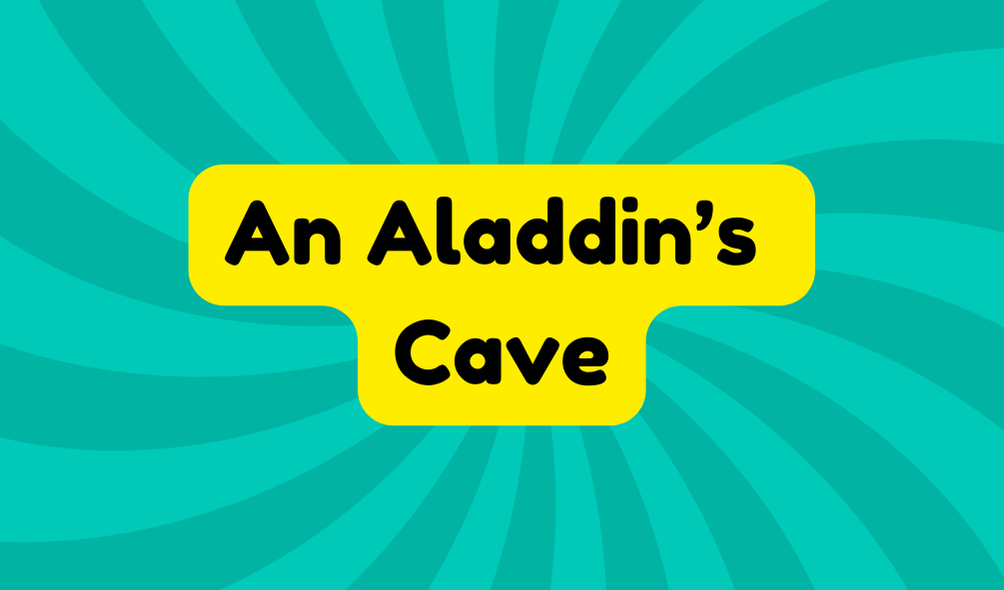An Aladdin’s Cave symbolizes a space overflowing with valuable treasures and hidden gems. This term, rooted in the tales of The Thousand and One Nights, evokes both fascination with wealth and the complexities surrounding it. While it paints a picture of ideal abundance, it also invites skepticism about the realities behind such riches. Exploration of thrift stores, antique shops, or knowledge repositories can reveal unexpected finds. Uncovering the truth behind this metaphor often requires effort and discernment. More insights await.
Synonyms
When exploring the phrase “An Aladdin’s Cave,” one may encounter a rich tapestry of synonyms that reflect its essence of wealth and treasure. These terms not only highlight the allure of riches but also invoke a sense of mystery surrounding hidden fortunes. Some relevant synonyms include:
- Treasure trove
- Wealth repository
- Goldmine
- Bounty
These expressions illustrate the multifaceted nature of prosperity and evoke curiosity. However, one must approach these terms with a critical mindset, recognizing that wealth can often be a façade, veiling the complexities beneath its surface. Such is the enchantment of “An Aladdin’s Cave.”
Example of Sentences
The phrase “An Aladdin’s Cave” is often used to describe a place brimming with hidden treasures and wealth. It invokes images of extraordinary finds that captivate the imagination. Consider these examples:
- The antique shop resembled an Aladdin’s Cave filled with magical treasures waiting to be discovered.
- His garage was an Aladdin’s Cave, hiding tools and components of inexplicable hidden wealth.
- The library served as an Aladdin’s Cave of knowledge, revealing hidden gems in dusty old volumes.
- Each thrift store is an Aladdin’s Cave, where someone’s forgotten items may hold unexpected value.
Such usage highlights both aspiration and the reality of seeking hidden wealth.
Origin
Rooted in the narrative tapestry of The Thousand and One Nights, the phrase “An Aladdin’s Cave” finds its origin in a tale that has transcended cultures and centuries. This enchanting story, introduced to Western audiences by Antoine Galland in 1710, reflects profound cultural influence and literary significance. While the tale portrays a magical cave filled with riches, its essence lies in humanity’s age-old fascination with wealth. The concept signifies not just physical treasures but also the boundless aspirations of people. Consequently, despite its mythical nature, the phrase continues to resonate, embodying the allure of prosperity and hidden potential in our lives.
Collocations
Collocations related to “An Aladdin’s Cave” reveal a deeper understanding of its contextual usage and cultural significance. These phrase connections illustrate how language shapes perceptions about wealth, treasure, and magical allure. The following examples showcase this relationship:
- “Cave of wonders”
- “Hidden treasure”
- “Wealth of knowledge”
- “Magical riches”
Each collocation enhances the imagery of a place overflowing with possibility, underscoring the human fascination with fortune. However, such expressions can also evoke skepticism about the realities behind perceived wealth, urging individuals to question the true nature of these tantalizing treasures hidden beneath a layer of enchantment.
How to Use in Everyday Language
In everyday conversations, using the phrase “an Aladdin’s cave” can vividly illustrate a situation or place filled with unexpected wealth or resources. This figurative language enriches everyday expressions by painting a mental image of abundance. People might use it to describe a thrift store brimming with hidden gems or an office packed with innovative ideas yet to be discovered. However, relying solely on such phrases may oversimplify more complex scenarios. While enticing, one should approach the concept with skepticism, recognizing that not all “caves” yield treasures and that real opportunities often require effort and strategy beyond mere optimism.
Why Is It Still Relevant Today?
Why does the phrase “an Aladdin’s cave” continue to capture people’s imaginations today? Its cultural symbolism evokes visions of untold wealth and boundless opportunity, appealing to those who seek innovation. In modern interpretations, this phrase often represents not just material riches but also the treasures of knowledge and creativity. However, beneath the allure lies a critical perspective on the pursuit of wealth, raising questions about the true costs of such desires. As society evolves, “an Aladdin’s cave” serves as a reminder of both aspiration and caution, balancing dreams of prosperity with the realities of modern life.







